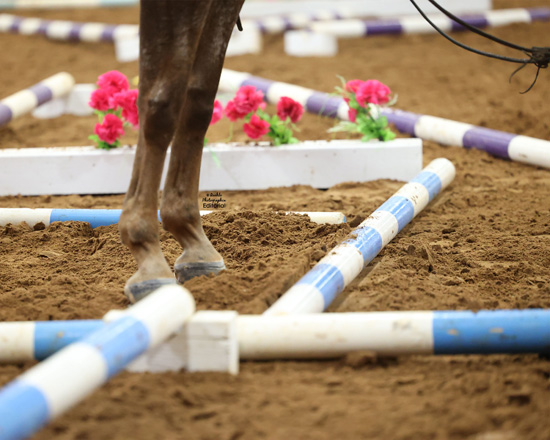New Target Identified for Managing Equine Arthritis Pain
By Kentucky Equine Research Staff
Pain associated with osteoarthritis in horses could be due in part to a protein found within joints called nerve growth factor (NGF). Blocking NGF from binding to its receptors, thus short-circuiting pain and inflammation, may prove to be a novel treatment option in the management of osteoarthritis.
Studies show that NGF levels increase in arthritic cartilage, synovial membranes, and synovial fluid, and may be involved in pain-signaling pathways, programmed cell death, and inflammation.
“Which pathway NGF affects appears to depend on which receptor NGF binds to—either TrkA, p75NTR, or even a combination of both,” explained Kathleen Crandell, Ph.D., a nutritionist for Kentucky Equine Research.
TrkA and p75NTR (abbreviations for thyrosine kinase A and pan-neurotrophin, respectively) receptors appear to be expressed at different levels within the joint depending on the stage of osteoarthritis. Building on that research, a team of scientists measured the expression of TrkA and p75NTR in synovial membrane cells harvested from horses with various stages of osteoarthritis.* Samples from five healthy horses were collected, as well as four from each of the following types of joints: synovitis (inflammation of the synovial membrane) without cartilage changes; synovitis with cartilage damage; and synovitis with intra-articular bony fractures.
TrkA was more prevalent in synovial membranes collected from horses with simple synovitis or synovitis with articular cartilage changes. Scarce or inconsistent staining was observed in the tissue collected from horses with synovitis and intra-articular bony fractures. In contrast, p75NTR was more prevalent in horses with advanced stages of disease (i.e., synovitis and cartilage changes, and synovitis and intra-articular bony fractures).
Thus, the relative levels of TrkA and p75NTR at different stages of osteoarthritis appear to vary. According to the researchers, evaluating the effect of having differentially expressed NGF at various stages of disease is important. “Failure to acknowledge the complexity of NGF receptor signaling may create problems in a future clinical setting,” they summarized.
According to the researchers, one possible problem is the use of anti-NGF therapy, a technique that employs antibodies, or proteins, that bind to NGF and therefore block its action.
“Anti-NGF therapy could inhibit signaling of growth and repair early in the course of disease when the antibodies block NGF from binding to TrkA. In contrast, anti-NGF therapy could inhibit programmed cell death later in the course of disease when p75NTR is primarily expressed,” explained Crandell.
Advanced studies using anti-NGF have begun in humans with osteoarthritis. While not yet available in equine medicine, this avenue could prove to play an important role in managing this painful, progressive disease characterized by articular cartilage destruction.
“While we wait on innovations, owners could use treatment options currently available for managing their arthritic horses based on veterinary recommendation. An appropriate osteoarthritis treatment plan typically includes oral joint health supplements containing glucosamine, chondroitin sulfate, and hyaluronic acid,” Crandell advised.
She added, “These ingredients aid in maintaining joint integrity, reducing cartilage damage, and stimulating cartilage repair.”
*Kendall, A., S. Ekman, and E. Skiöldebrand. 2022. Nerve growth factor receptors in equine synovial membranes vary with osteoarthritic disease severity. Journal of Orthopaedic Research:25382.











